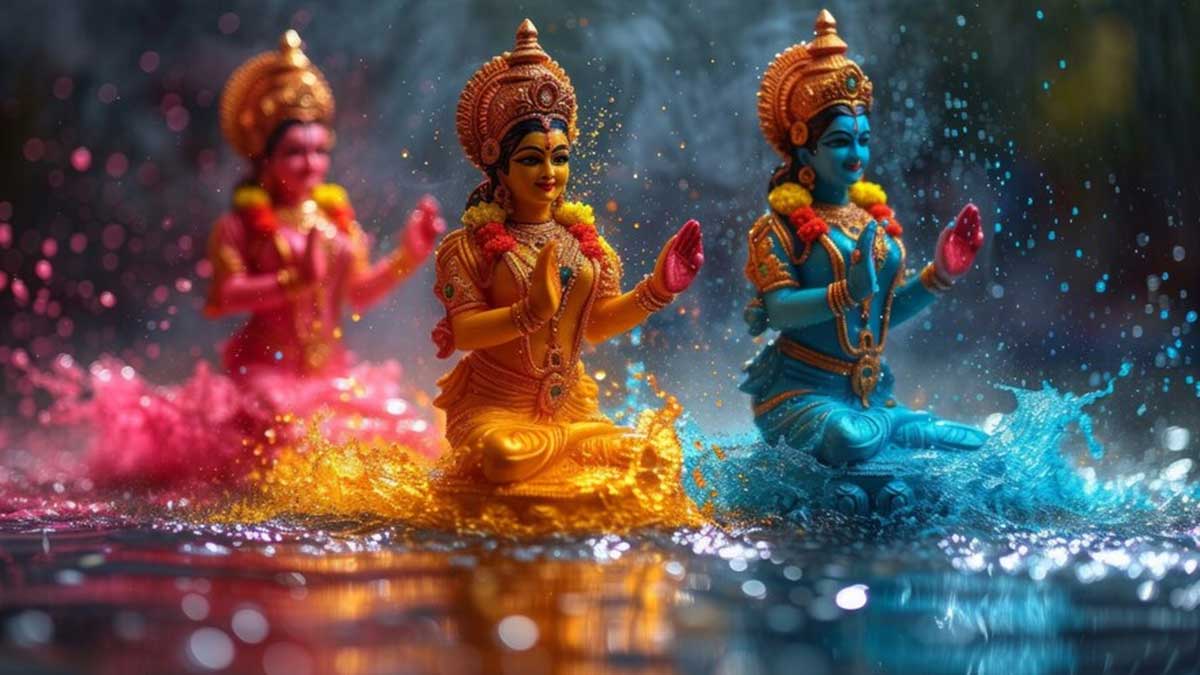
The paths of life, as per the Hindu religion, majorly include Vaishnavism, Shaivism, Shaktism, and Smartism. These four paths offer unique philosophies and practices which are associated with different deities and spiritual traditions. To understand what each of them preaches and implies, read the inputs shared by Amit Pradhan, CEO Jay Mahakaal and Reiki Grand Master, in this article.
The Hindu denomination known as Vaishnavism or Vishnuism is centred around the devotion to Lord Vishnu and all his avatars. The roots of Vaishnavism are ancient yet somewhat ambiguous. However, according to some sources, it started with Prajapati Daksha, while some claim it emerged with Lord Krishna himself.

The followers of Vaishnavism, or ‘Bhagavats’ believe Lord Vishnu to be the supreme deity and the one that embodies qualities of strength, power, knowledge, wealth, and brilliance. They honour and worship the various incarnations of Vishnu, including Krishna and Rama. The prominent sub-sects amongst the Bhagavats are namely the Vairagi, Ramanuja, Vallabhacharya, and Radha Vallabha traditions. Each of these features unique rituals and philosophies.
The Shaivism denomination of the Hindu religion is devoted to Lord Shiva who is known as a powerful and supreme deity in religious texts such as the Mahabharata which shows Arjuna seeking Shiva’s blessings in the Himalayas. It also includes a number of sub-sects like Pashupata, Shaktism, Dashanami, Nath, and Nagas.

Founded by Lakulisha, the Pashupata sect is believed to be one of the oldest. Its major emphasis lies on tantric practices. The expert said, “The followers of Shaivism (Start And End Dates Of Sawan 2024), or the ‘Shaivites’ believe Shiva to be the ultimate reality and the source of all creation, destruction, and transformation in the universe.”
Don't Miss: Madhukamini Plant: Astro Benefits Of Keeping Orange Jasmine At Home
Often viewed as a part of Shaivism, Shaktism honours and worships Goddess Parvati and her many forms, including Durga and Kali. The expert mentioned that the Shakta tradition emphasises the divine feminine power or Shakti. Shakti is believed to be the creative force of the universe, according to ancient scriptures. The prime text ‘Shri Durga Bhagavata Purana’ is a major part of Shaktism and talks about the goddess's 108 manifestations. According to Shaktism, the Goddess Durga is believed to be the supreme power in the universe and the followers of Shaktism seek her blessings for strength, protection, and spiritual fulfilment.

Talking about Smartism, the expert shared, “It is a tradition that emphasises the worship of five Hindu deities: Vishnu, Shiva, Shakti, Ganesha, and Surya. Adi Shankaracharya is credited with consolidating this tradition, promoting a more inclusive and philosophical approach to worship. Smartism upholds the belief that all deities are manifestations of the same ultimate reality, Brahman, and encourages the worship of any or all of these deities. This approach promotes unity among different sects and highlights the underlying oneness of the divine.”
Don't Miss: Sunderkand Reading Time As Per Astrology Expert
If you liked this story, then please share it. To read more such stories, stay connected to HerZindagi.
Also watch this video
Herzindagi video
Our aim is to provide accurate, safe and expert verified information through our articles and social media handles. The remedies, advice and tips mentioned here are for general information only. Please consult your expert before trying any kind of health, beauty, life hacks or astrology related tips. For any feedback or complaint, contact us at [email protected].